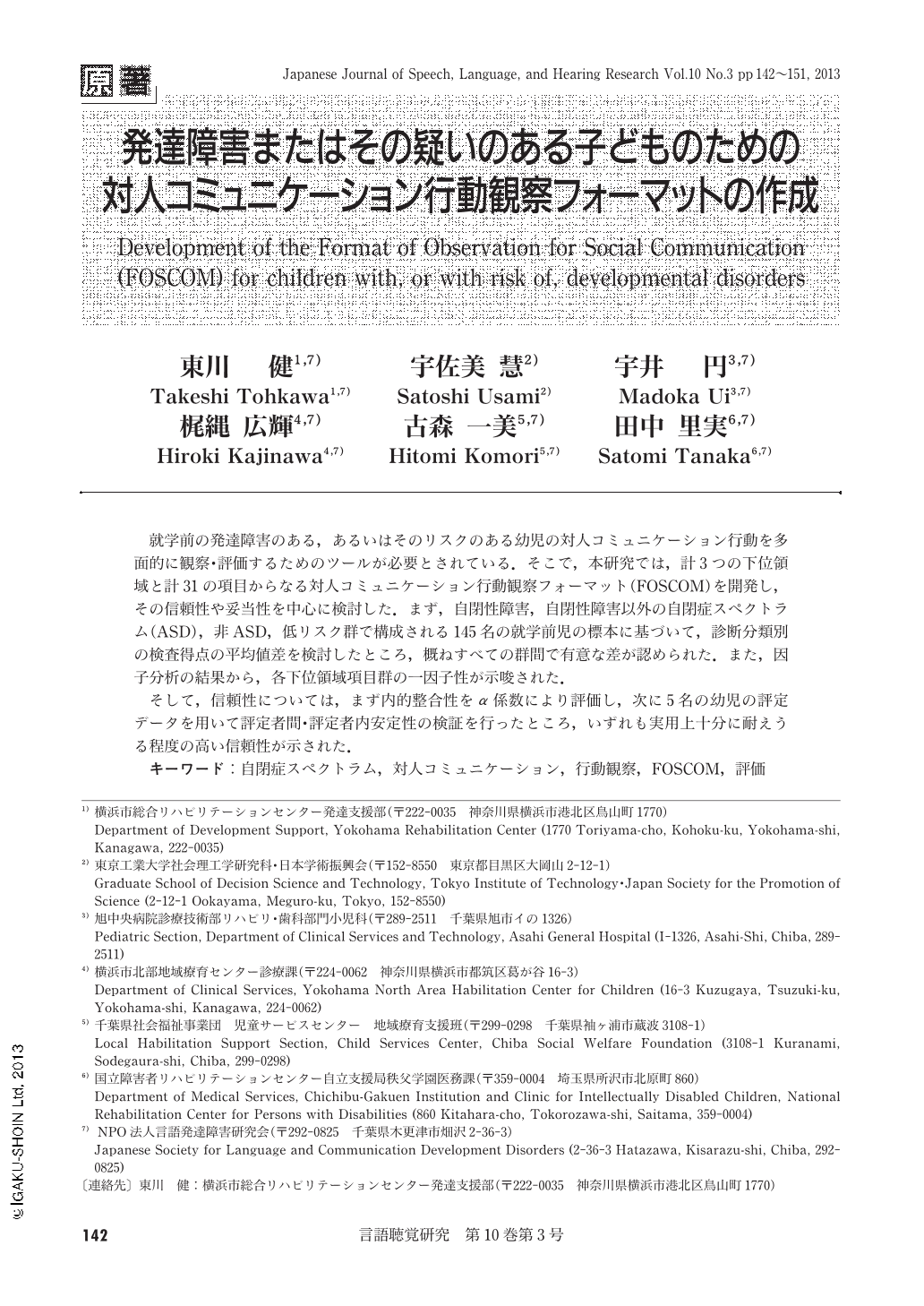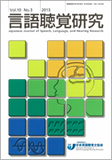Japanese
English
- 有料閲覧
- Abstract 文献概要
- 1ページ目 Look Inside
- 参考文献 Reference
- サイト内被引用 Cited by
就学前の発達障害のある,あるいはそのリスクのある幼児の対人コミュニケーション行動を多面的に観察・評価するためのツールが必要とされている.そこで,本研究では,計3つの下位領域と計31の項目からなる対人コミュニケーション行動観察フォーマット(FOSCOM)を開発し,その信頼性や妥当性を中心に検討した.まず,自閉性障害,自閉性障害以外の自閉症スペクトラム(ASD),非ASD,低リスク群で構成される145名の就学前児の標本に基づいて,診断分類別の検査得点の平均値差を検討したところ,概ねすべての群間で有意な差が認められた.また,因子分析の結果から,各下位領域項目群の一因子性が示唆された.
そして,信頼性については,まず内的整合性をα係数により評価し,次に5名の幼児の評定データを用いて評定者間・評定者内安定性の検証を行ったところ,いずれも実用上十分に耐えうる程度の高い信頼性が示された.
The Format of Observation for Social Communication (FOSCOM) was developed to observe and assess social-communicative behaviors of preschool-age children with, or with risk of, developmental disorders. FOSCOM includes a total of three subscales and 31 items. In this study, we examined several statistical features of FOSCOM including validity and reliability based on data collected from 145 children.
The results of ANOVA showed that the mean differences of scores of FOSCOM among children with autistic disorders, children with autism spectrum disorders (ASD) other than autistic disorders, children with non-ASD, and children with low-risk were statistically significant at almost all pairs and scales, indicating criterion-related validity for the test scores and diagnostic classification. Also, we performed a factor analysis and confirmed that one factor model fit well in all subscales. Additionally, we also evaluated the reliability of FOSCOM through investigations of internal consistency based on α coefficient, and inter-rater as well as intra-rater reliability based on the repeated measures data collected from five children. Both results indicated sufficiently high reliabilities, and the usefulness of FOSCOM was thus confirmed for actual assessment.

Copyright © 2013, Japanese Association of Speech-Language-Hearing Therapists. All rights reserved.


